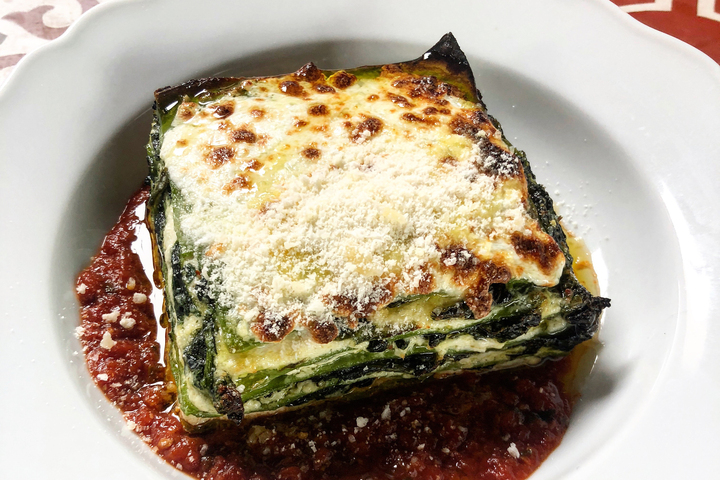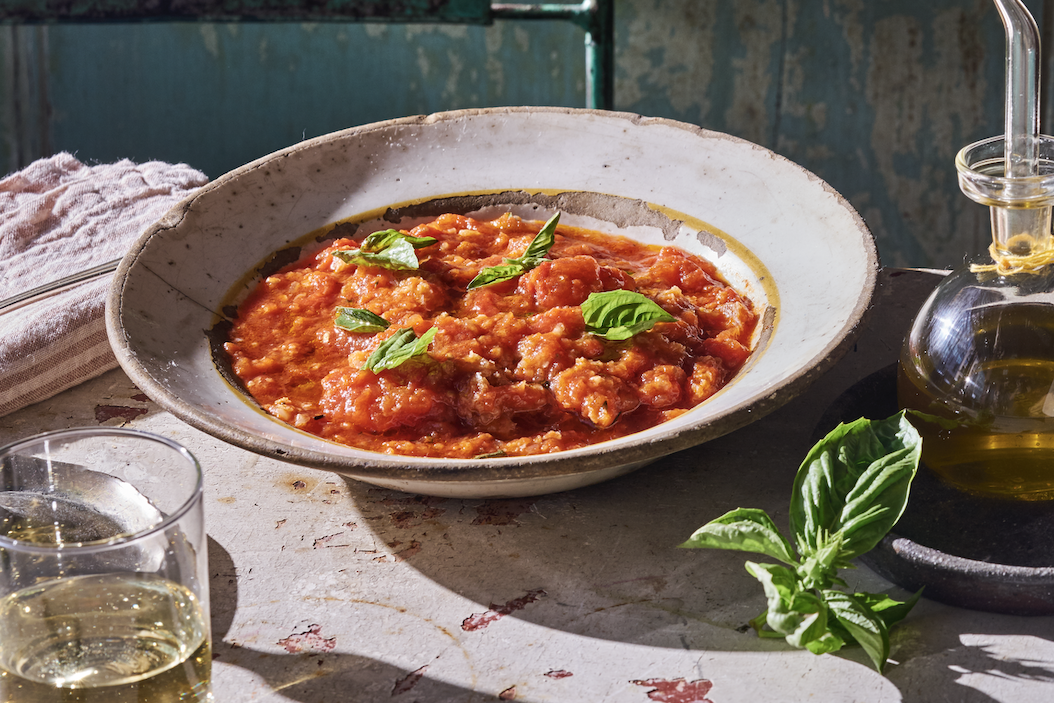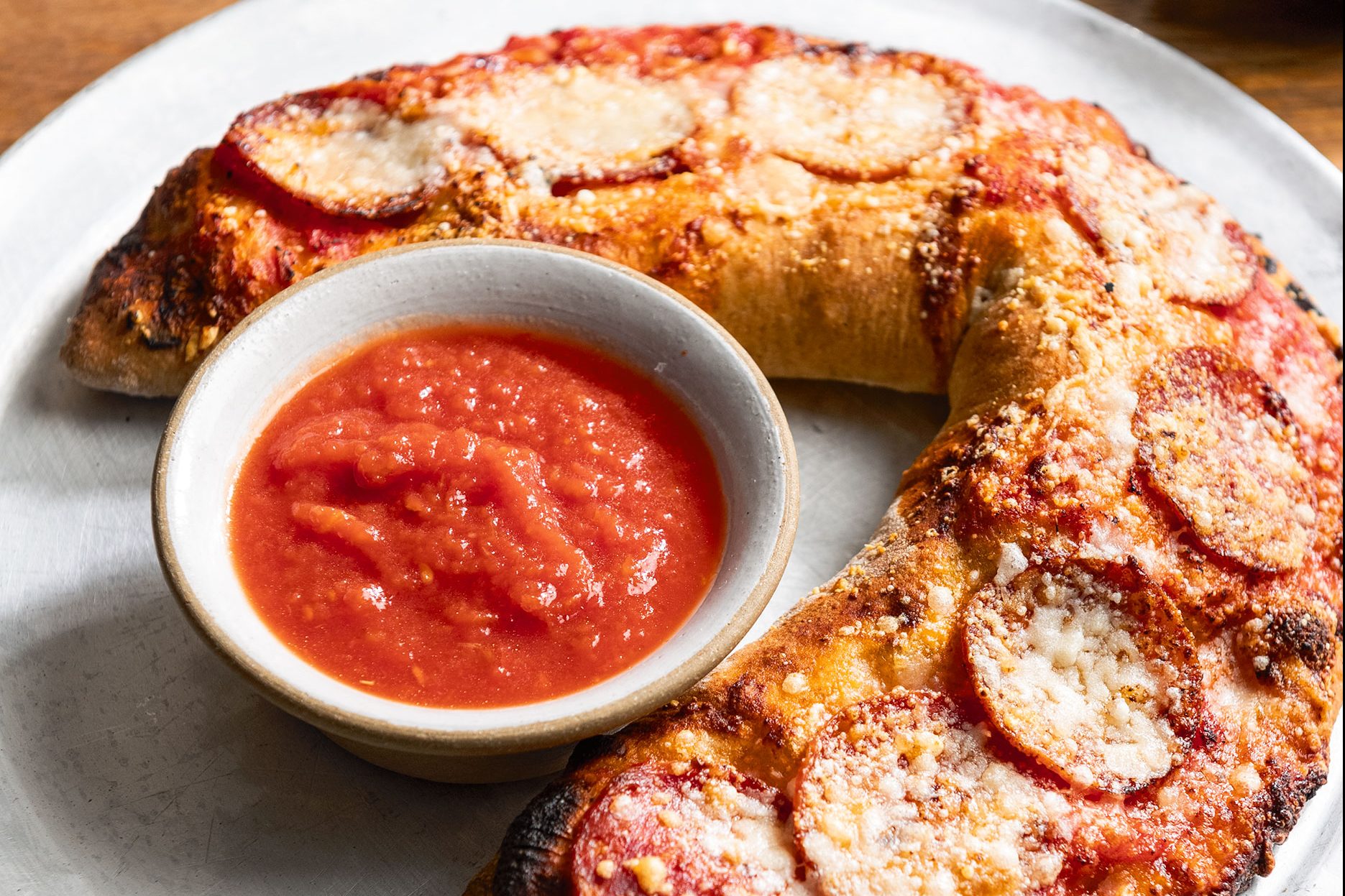Before you do anything else — including read this story — Che Fico executive chef and co-owner David Nayfeld wants you to go to saverestaurants.com and support the RESTAURANTS Act. That acronym is pained — it stands for the Real Economic Support That Acknowledges Unique Restaurant Assistance Needed To Survive Act — but the help it could offer the ailing industry is significant, with $120 billion made available through grants administered by the Treasury Department.
Without its passage, Nayfeld says, the results will be catastrophic. “The state of the state at a macro level is this: The restaurant industry is crumbling, and we are desperately in need of the RESTAURANTS Act. There’s nothing else out there that will save our industry,” he says. “We were asked to do our civic duty by shutting our restaurants and protecting the public good, and now we need the government to step up and help us make it through this time. I’m not asking them to save the keychain industry (with all due respect to the keychain industry). I’m asking them to save an industry that adds more to the GDP than any other private industry in the country. We employ 16 million human beings. Over 10% of the [American] workforce works in restaurants, and if they don’t save those jobs, we’re talking about some crazy, crazy level of fallout.”
The Che Fico family of restaurants — for our money, the best place to get Italian food in S.F. — is getting by with an ever-shifting mix of to-go orders, pantry-goods sales, and outdoor and indoor dining — a difficult-to-sustain juggling act that won’t work for everyone. “Take-out is not going to sustain the majority of restaurants,” he says. “It’s like, imagine you’re stuck in a deep, dark hole and what you really need is a rope. You need the rope … but if someone has a bottle of water, you’re going to be happy for that bottle of water.”
Metaphorically speaking, the rope here is the federal aid, and the bottle of water is continued support of Che Fico Alimentari’s various offerings: its Chanukah menu, its line of pantry goods and the to-go selection. The Chanukah menu in particular should appeal to dinners irrespective of their personal faiths, with roasted chicken, potato latkes with heirloom apple sauce and house-made sour cream, and a high-end take on Chanukah gelt with white chocolate and sesame paste. (Plus, Nayfeld says, “a really extraordinary bottle of Lambrusco.”)
That lovely meal — now available on Tock — is emblematic of the creativity, hospitality and joy knit into San Francisco’s restaurant scene. To spread a bit more of it around, we asked Nayfeld for some of his favorite things, including cookbooks, his top pieces of kitchen gear and a recipe to try at home featuring orecchiette with fennel sausage, which, P.S., is in fact our love language. (For more of that energy, check out Nayfeld’s new podcast, The Main Ingredient, which kicked off in high-key fashion in September with a chat with Dominique Crenn, and has gone on to feature similar top-shelf guests like Gwyneth Paltrow, Tanya Holland and Andrew Friedman.)
In exchange, go email your senators to get off their butts and get the RESTAURANTS Act passed. Or don’t, and we can all look forward to our 2021 holiday dinners at Sbarro’s.

BOOKS
The Splendid Table: 500 Years of Eating in Northern Italy by Lynne Rossetto Kasper
“This book was one of the first books that endeared me to Italy, specifically to Emilia-Romagna. It is one of those books I still refer to for fact checking and references.”
The Silver Spoon (Traditional Italian Home Cooking Recipes)
“This book is as close as it gets to a dictionary of Italian concepts, theories, and dishes. I use this book a lot as a reference point for proper spellings as well as other tidbits and useful tips. The Silver Spoon is a great book for a reader who wants to have a broad understanding of Italian cuisine beyond the obvious.”
The Classic Cuisine of the Italian Jews, I: Traditional Recipes and Menus and a Memoir of a Vanished Way of Life by Edda Servi Machlin
“This is the first book that really illuminated the idea of Cucina Ebraica to me.”
Ducasse Flavors of France by Alain Ducasse
“Flavors of France represents everything about haute cuisine that I fell in love with and miss at most fine dining restaurants today. The book is filled with beautiful photography and shows refined technique with a more casual approach.”
The Last Course: The Desserts of Gramercy Tavern by Claudia Fleming
“I don’t think, at least for my taste, there is a more influential pastry chef in the country. She makes everything you want to eat for dessert.”
Gastronomy of Italy by Anna Del Conte
“You don’t see cookbooks this immersive anymore. It’s full of incredible technique and knowledge in the most authentic way. Nothing is adapted or dumbed down for the reader.”

GEAR
Kuhn-Rikon vegetable peeler
“Every American professional cook has this Swiss peeler. It’s ergonomic and very easy to maneuver.”
Plastic Dough Scraper
“This is a great tool to use to pick things up. It could be used for dough or picking up herbs once chopped or putting something into a pastry bag. It’s incredibly versatile.”
Plating Tongs
“These tongs are more delicate and you have more control when using them.”
Cake Testers
“I love super thin cake testers not only for checking cakes and baked goods but also for checking the doneness of steak.”
Peugeot Pepper Mill
“Because if you use ground pepper, you are missing out on great flavor. Buy whole peppercorns, toast them and then grind them in this mill.”

A RECIPE
Orecchiette with fennel sausage, broccoli rabe and Calabrian Chili Bomba
⅓ lb orecchiette
4 tsp extra virgin olive oil
3 oz pork fennel sausage
2 cup broccoli rabe, chopped
⅛ cup red onion
1 garlic clove, sliced
1½ tbsp butter
1 tbsp Calabrian Chili Bomba
⅓ cup grated pecorino
1 tbsp lemon juice
3 tbsp chopped curly parsley
Kosher salt, to taste
2 tsp extra virgin olive oil
Heat olive oil in a sauté pan over medium heat. Sear the sausage patty.
Once golden brown on one side, add the garlic and red onions and break up the sausage into quarter-size pieces. Add the calabrian chili bomba and broccoli rabe to the pan and sauté.
Drop the orecchiette in salted boiling water and cook according to the directions on the package. Once the pasta is cooked, add it to the sauté pan with 4 oz. of pasta water. Cook the sauce down for 30 seconds and then add the butter and season with lemon juice and salt to taste. Once the sauce has reduced and is coating the noodle, add the chopped parsley and the pecorino off the heat and stir to coat the noodles.
Plate in a bowl and top with the remaining extra virgin olive oil.
This article was featured in the InsideHook SF newsletter. Sign up now for more from the Bay Area.





















